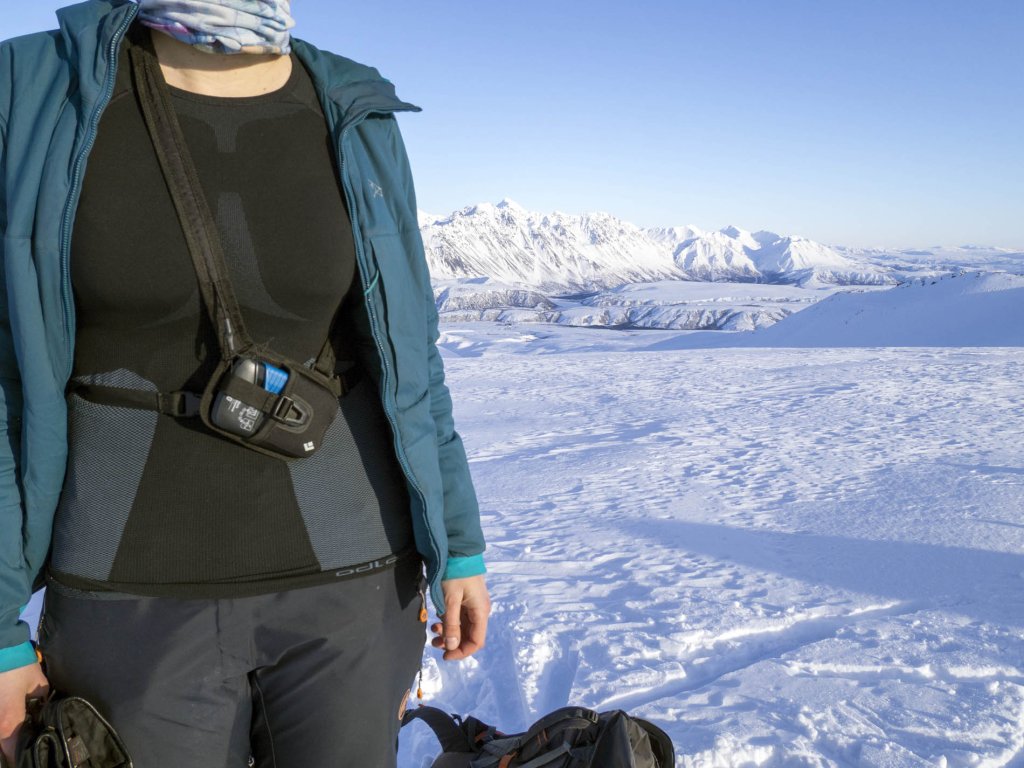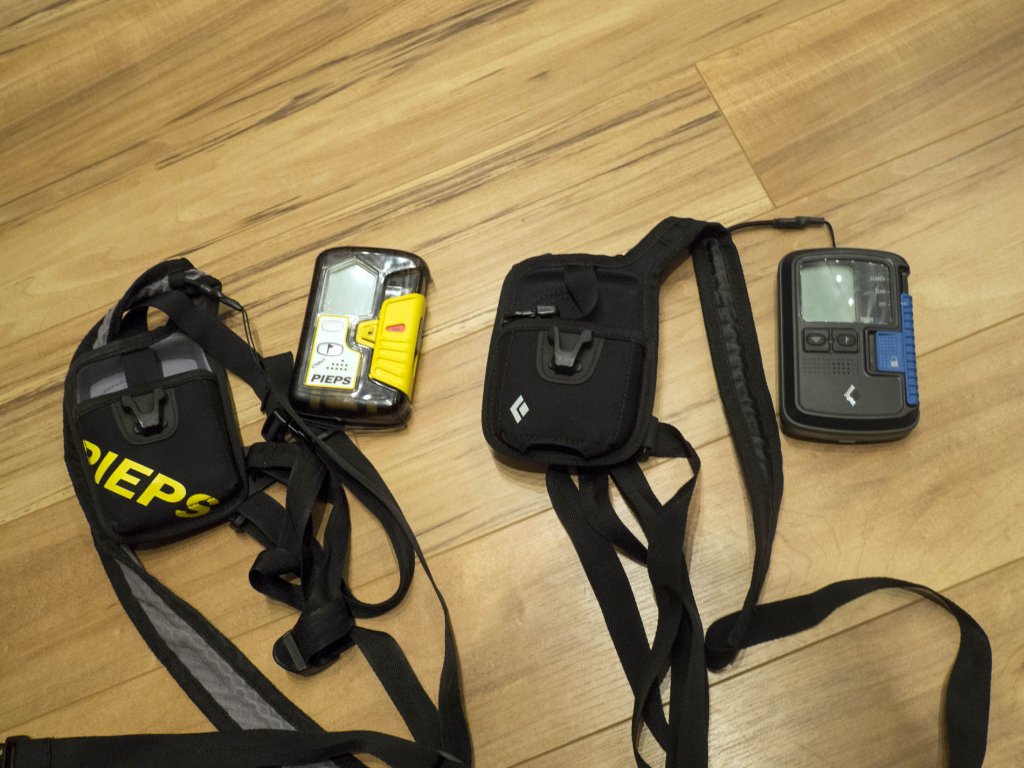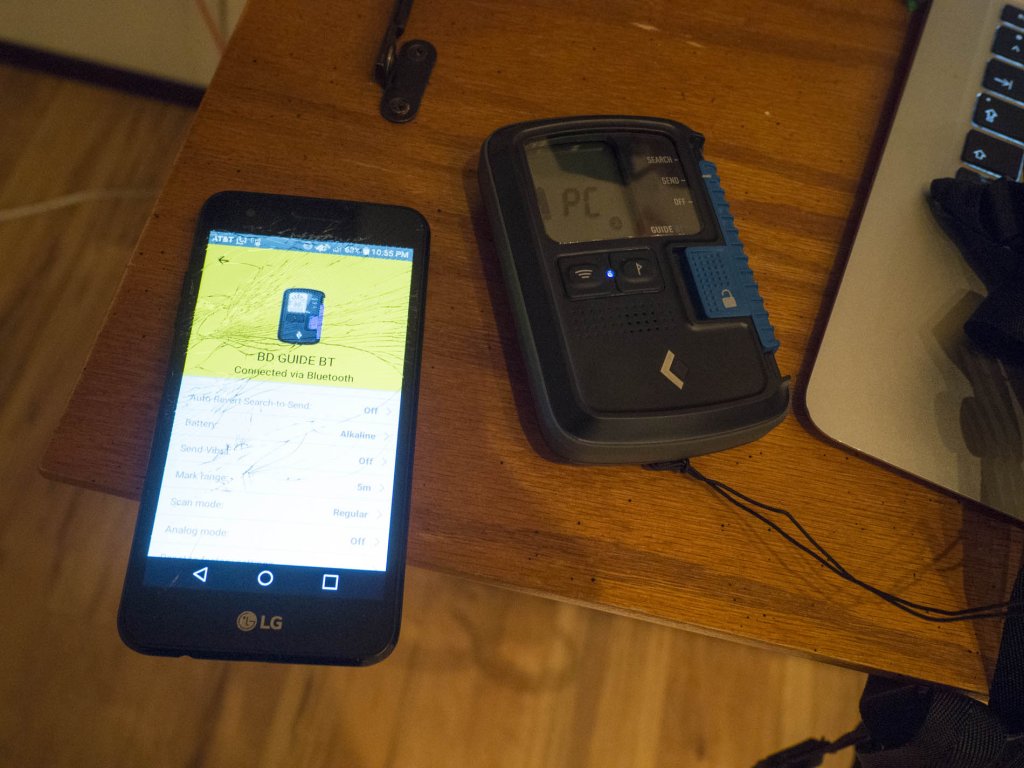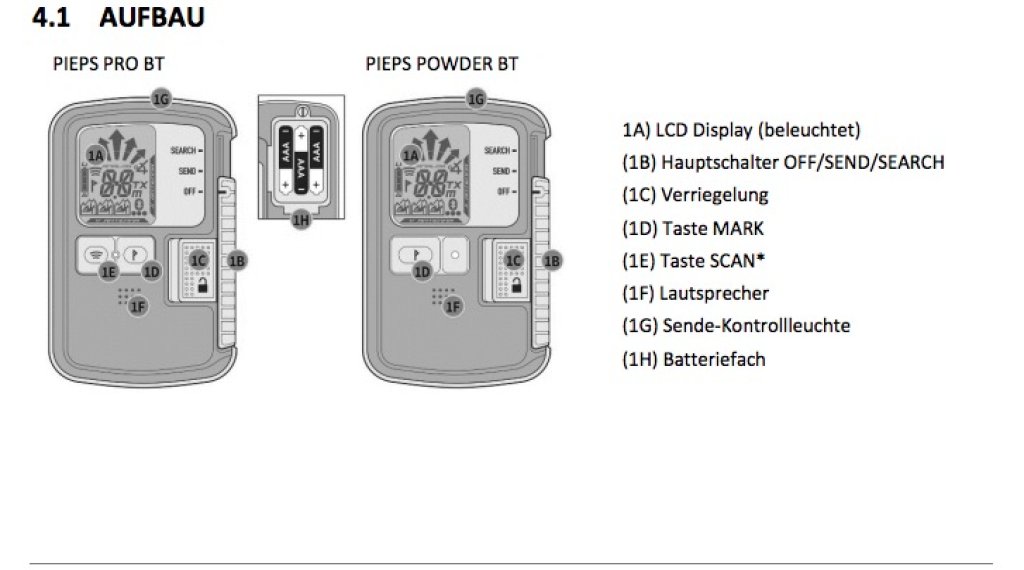In case anyone is confused, lets piece it together slowly:
Black Diamond Guide BT = Pieps Pro BT in black = successor to Pieps DSP Pro.
Black Diamond Reckon BT = Pieps Powder BT in black = successor to Pieps DSP Sport.
First impression
Compared to its predecessor, the DSP Pro, the Guide BT hasn't changed much at first glance: The device has remained the same size, still has two buttons (Mark - flag symbol and Scan - Wifi-like symbol) and a slide switch with which you switch the avalanche transceiver on and off and switch from transmit to search mode. I find the slide switch a little stiff and usually have to give it a little help to engage. In search mode, the switch does not want to engage completely and I can always switch from search mode back to transmit mode with one hand and without pressing the lock button. This is also the case with my DSP Pro, so it is reasonable to assume that this is how it is intended. In transmit mode, the switch engages firmly and the slider can only be moved if the lock button is moved at the same time.
The carrying system has remained the same, with the exception of one small, somewhat surprising change: in the old harness, the avalanche transceiver slips out of the stiffer "socket" when you open the buckle and pull on the fastening strap, as this runs behind/under the device. This is no longer the case with the new carrying system. Not a particularly significant change, but I personally found it practical and wonder why they have now given up on this convenient feature.




